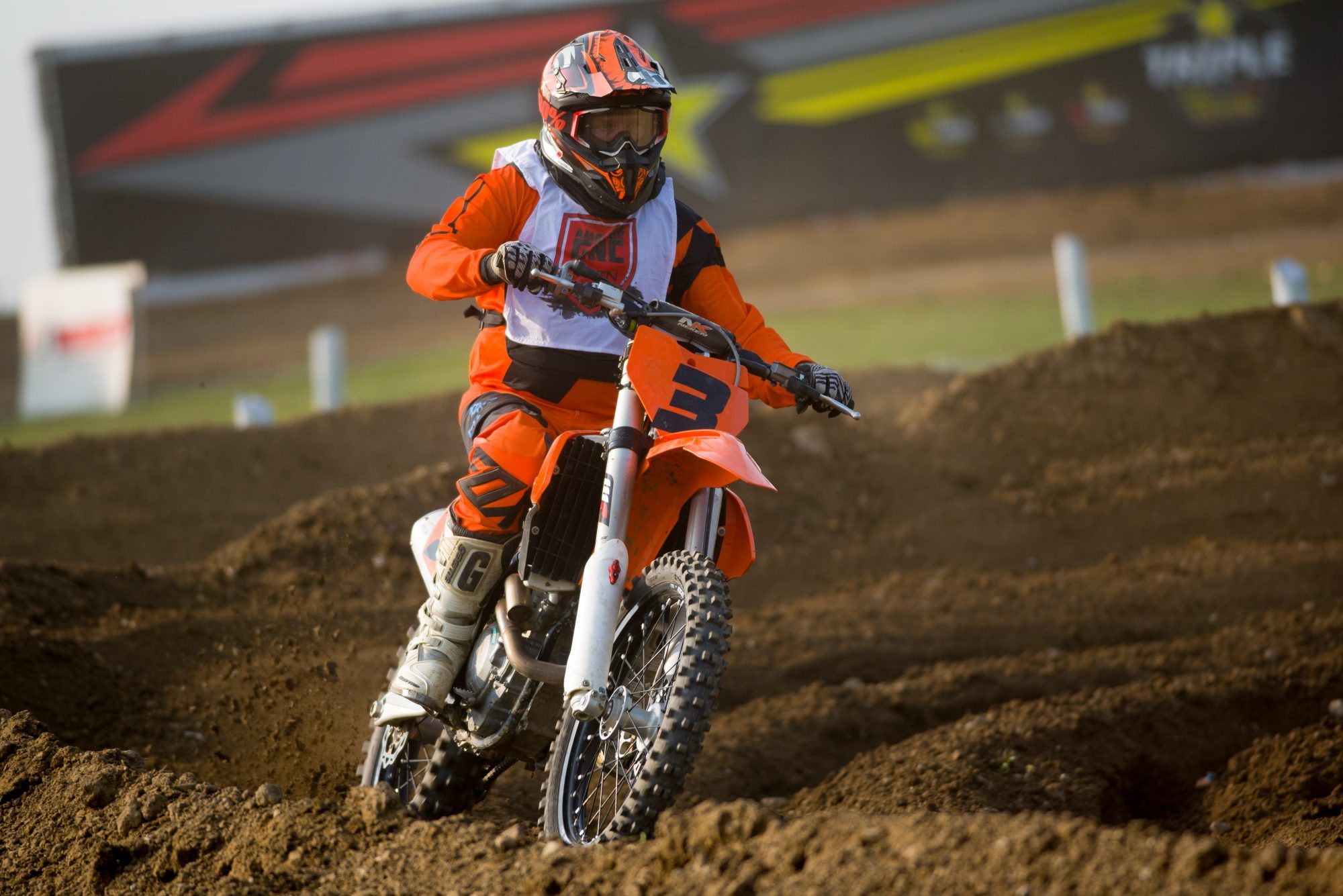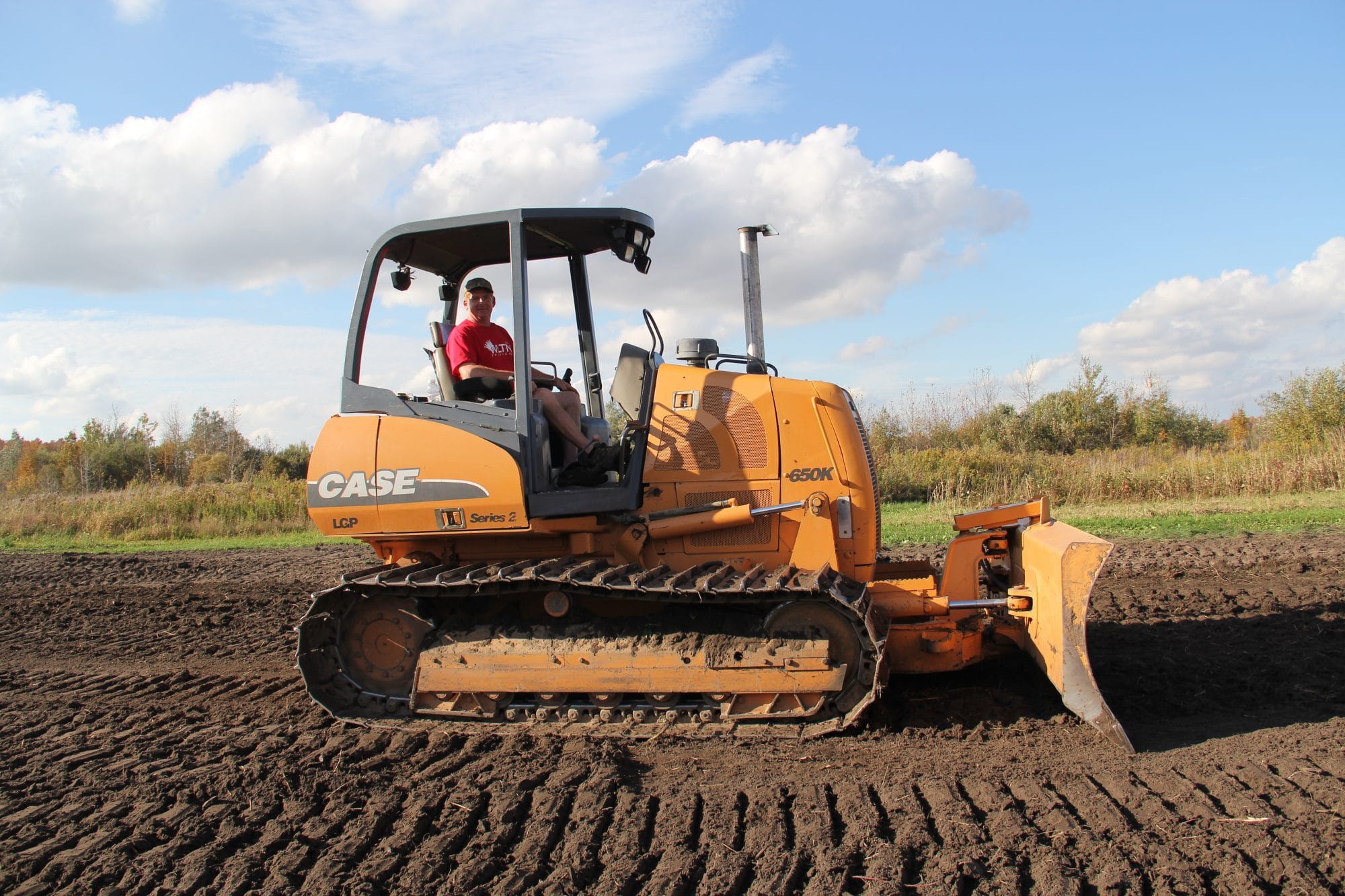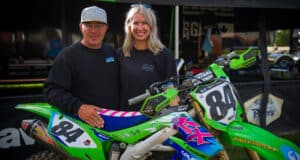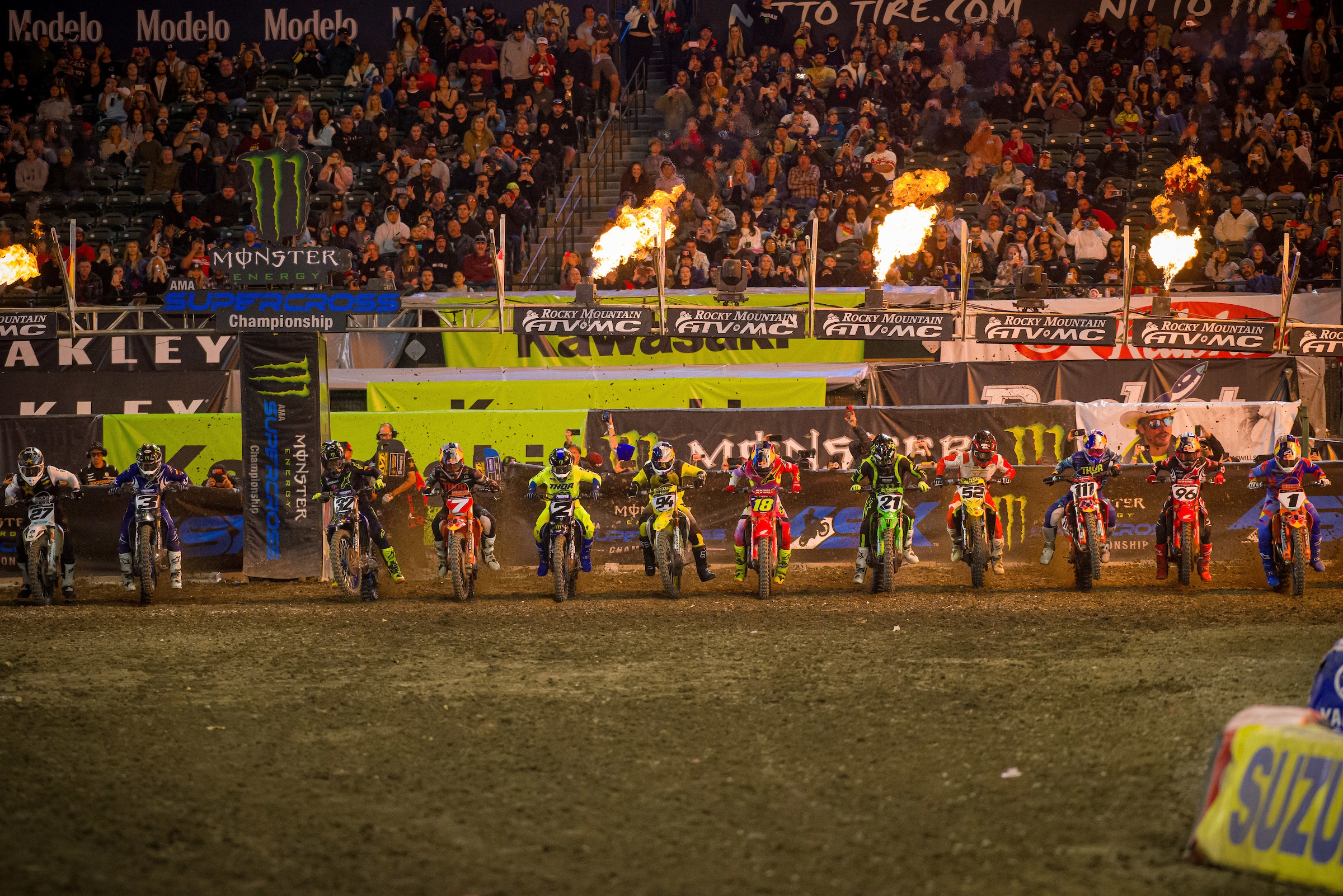Bill Wallin was a top Canadian Pro Racer in the late ‘80s and early ‘90s. Wallin was known for being an extremely hard-working individual who loved the sport, loved racing, and being at the track. These days the Elmville, Ontario native is still very much involved in the sport and is fresh off a victory in the 50+ class at the Walton Trans Can this past summer. He can also be found most days at the controls of his new bulldozer as he now spends his time building MX tracks for anyone who requires his services. We thought we would take a few minutes to catch up with Bill to find out exactly what he’s been up to.
MXP: Hey Bill, I guess I will start off by congratulating you on your +50 Walton TransCan title this summer. How was your week at Walton?
BW: Thanks, my week was really good. I was so busy working all summer that my week at Walton was a great vacation for me. I’d just gotten a new dog as well, so we spent some quality time together and won a championship in the +50 Class.
MXP: How many Walton titles does that make for you now?
I’m not too sure, really, maybe eight. My only Pro title was in the GP Pro class at one of the first years of the event. The GP Pro was basically the 500 Open class that was renamed GP Pro. It was the last year for the 500 class in the Canadian Nationals. They didn’t mention that one in the book for some reason though. (Walton Program which lists all the past Champions)
MXP: Do you still get to ride a lot these days?
I really love riding in the fall so at some points during the season I still do quite a bit. I re-did my tracks at home this fall and rode lots. I had lots of my buddies over, guys like Greg General and Ken Bland (former Pro riders) would come over. Kenny brought some of his students that he teaches over as well, and we rode. I don’t go to a lot of races, just ride my tracks at home.
MXP: While you were at Walton you must have watched some of the younger riders. What do you think of some of the techniques that riders are using today?
Well, it’s come a long way. Of course, the power delivery of the bikes, the 4-strokes today is a lot different. You don’t hang off the back of the bike anymore like you did with a 2-stroke, instead it’s much more of an up-front style. To be honest I would love to learn a lot more about the modern-day technique. The last couple of years, in the winter, I’ve scheduled a lesson for myself when I’ve been riding at Dade City in Florida. Both times it rained on the day that I was supposed to go so I said forget it. I don’t want to spend the day out riding in the rain (laughs). I’m sure they have some good instructors there so hopefully this year I’ll be able to get it done.
MXP: You’ve raced now in four different decades. How does the sport look to you now compared to say the 1990s?
Well, one thing I would say is that I certainly think it costs a lot more these days than it used to, and I think the increased cost really has a direct relationship with how much guys practice and train these days. Back when I was young and really getting into it, I would go through 5 gallons of gas in my bike five days a week. I would run 10kms a day, every day. Everything to me was motocross. I could be wrong, I really don’t know, but I just don’t think there is as much time being spent on the bikes these days as there once was. Part of the reason is that it must cost 30-40 Grand just to get into it now.
I also think the sport might be getting a little too specialized. You know, when I was racing Pro I would still go out and ride trails or enter a hare scramble occasionally. In the States specifically, they concentrate on Supercross so much that a lot of guys don’t even ride outdoor motocross anymore. In the ‘80s and ‘90s there was no doubt that the Americans were the best riders in the world. I think that the Motocross of Nations has proven that that’s not true anymore. If there was one thing that’s different, I’d just say the specialization. That’s the direction the sport is going now.
MXP: When did you start riding, when was your first race and what was your favorite track?
My first race was at Copetown in 1982. I remember they had an elastic band starting gate then, that’s where I saw the checkered flag for the first time. My favourite track has always been Gopher Dunes. I always liked Gopher Dunes, because I like the sand.
MXP: What do you consider to be your best season as a pro rider?
In ‘88 I won some Arenacross races in the National Arenacross Series and did well in Canadian Supercross as well, that was my favourite year. It was the year I had the most fun. My most successful season, though, was probably 1991. I ended up third overall in the Canadian Nationals that year behind Ross (Pederson), who was number one of course, and Al Dyck.
MXP: You were always known as a hard-working rider. Was that something you took pride in?
Short answer, yes. (laughs) Yes, and I wish that was the one reason for success because I would have had much better results over the course of my career. I would have done a lot better. I realize now that wearing yourself out doesn’t necessarily make you the fastest. I wish I would have known things like that or about how important diet and things like that are back in those days.
MXP: Did you suffer a lot of injuries in your career?
I had my fair share of injuries. I broke the scaphoid bone in my wrist and that was a real problem for me, as it has been for many motocross riders. I had surgery on it, was in a cast for six weeks and then find out that it wasn’t healed. Very frustrating.
One thing about injuries, though, is every time I got hurt, I think I got a little smarter as a rider. Having said that, I think I was not really a very mature rider, especially in my younger days. I just kept going as fast as I could, and I had my fair share of big crashes and injuries.
One thing I wish is that they would have come out with a little sooner in my career were knee braces. That might have saved me from a few operations. I’ve had one major knee operation and several orthoscopic surgeries.
Funny story: I’m a Bobby Orr fan. I actually met him recently and got an autographed copy of his new book. I once had the same physiotherapist as Bobby Orr. He showed me the correct way to tape up my knees in order to get the most support I possibly could for my bad knees.
MXP: After you retired from pro racing, where did life take you?
A lot of places. (laughs) My father was in the construction business and I went to work with him building custom homes. After he retired, I started my own home renovation business, which eventually led to me getting into the business of setting up venues like the Rogers Centre, for example, for live events and rock concerts.
MXP: Really? How did that happen?
Well, I was good at reading blue prints. That helped. I remember my first day on that job they had me climbing one of the highest indoor scaffolding set-ups in the world. I was setting light standards hanging off this thing, with a safety belt, 140 feet in the air. No training at all, first day on the job. I think it was for a Green Day concert.
I still do some of that, but my track building business is starting to take over from that. Even though I enjoy it (the rock concerts) I guess I enjoy building tracks more. Makes sense, I guess.
I even spent one year performing the motorcycle stunts in a show at Canada’s Wonderland. That helped me do very well at Walton that year. I spent every day on a bike that season, and even though it was a DRZ 400, not a motocross bike, and it was on the pavement not the dirt, I was in great shape that year. I think I lost twenty to thirty pounds that summer because my job was a workout.
That show was supposed to go on for a couple years, but new owners took over Canada’s Wonderland and they cancelled the stunt show, which was too bad. I had some other offers in that area. One was to ride a stand-up jet ski in another show, but I didn’t do it. Can’t really remember why. I guess in life you are presented with many opportunities but you don’t always act upon them all.
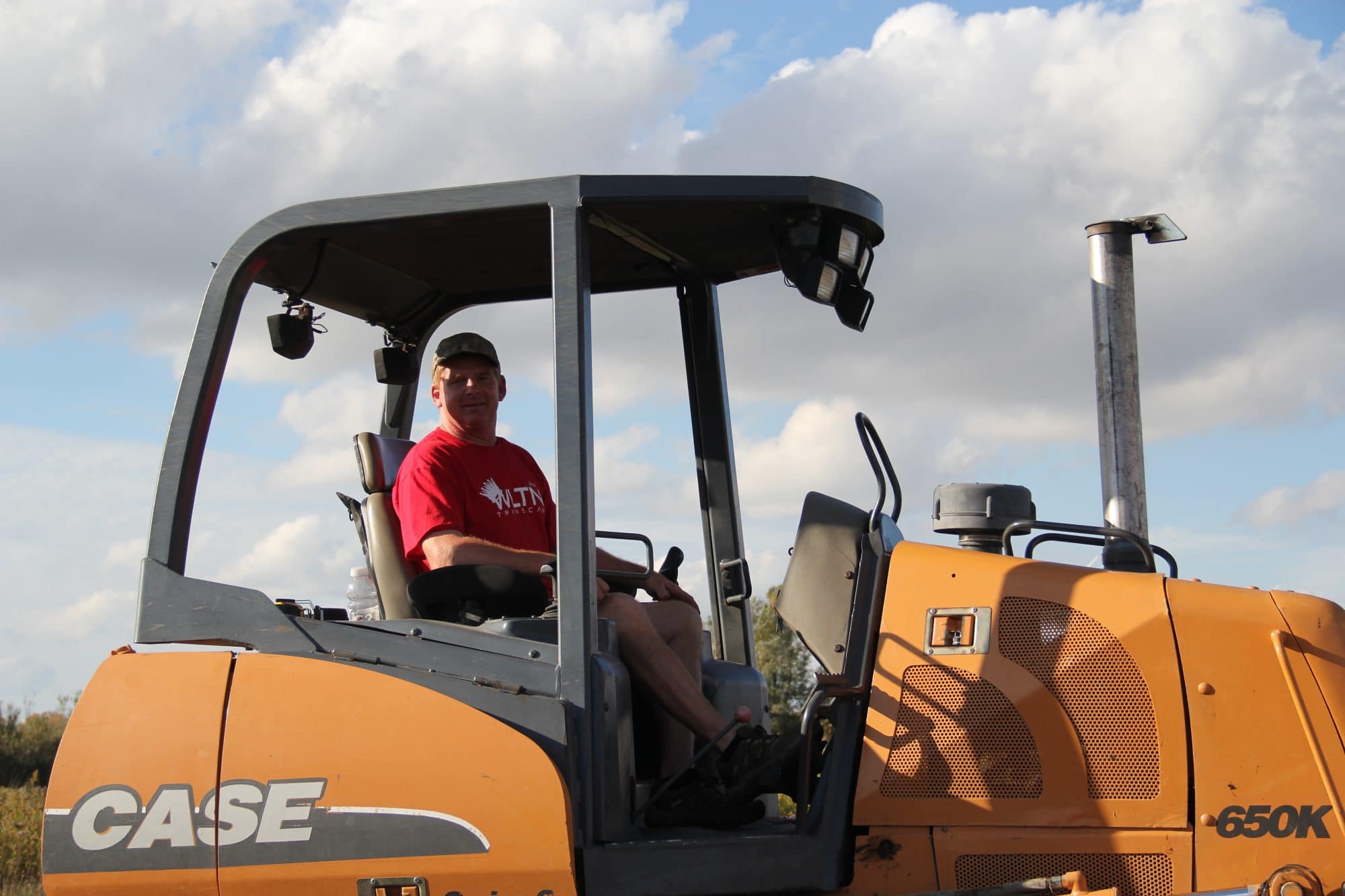
Bill was one of the top Canadian pro riders throughout the late 1980’s and early 1990’s. Photo by Bernadette Pomeroy
MXP: So, these days you’re building tracks for people. How did that start for you?
I’ve actually been on the dozer working on tracks since the ‘80s. I built the first double jump at Moto Park in 1987. Then Carl (Bastedo, owner of MotoPark) came out and told me double jumps were illegal and I had to take it down. I officially built my first track in ‘88 for Christina Sundal, who was a lady racer in the ‘90s. Since then I must have built at least 20 to 25 tracks for different clients. Over the years I split my time between the rock concerts and track building, but as I said, in this last year the track building work has become busier and takes up most of my time now.
Back in the Spring I was renting a dozer for all my track building work but that just wasn’t working for me anymore. My Mom wasn’t doing too well at the time, and my Dad, he’s in his eighties, so some days I needed to be with them, and if I had a dozer rented for that day it would just be money down the drain. So, I bought my own. It’s a Case 650 dozer and I think it’s perfect for working on MX Tracks.
I don’t have a truck and trailer right now, but I have a good deal worked out with a guy who floats it for me when I need it. So, I’m pretty busy. I’ve got work lined up for next season already. I still need to finish off a couple of projects from this year, so they will be first on the list when Spring comes.
MXP: Do you have a name for your business, and how do people get hold of you if they want a track built?
You know, a friend of mine came up with a pretty cool name but I can’t remember now what it was. (laughs) If anyone has any good ideas, please let me know. People can contact me on my cell phone (705) 718-1217, or better yet just contact me through my Facebook page. I’ve actually got a few jobs that way.
MXP: Will you be going back to Walton to defend your +50 title this year?
Oh yeah. I’ve only missed Walton a couple of times over the years. Once was because I was involved in the Supermoto Series and couldn’t make it, and that might be the only time come to think of it, so in answer to your question, yes, I plan on being there. And I’m planning on racing. I’m a die-hard.
MXP: Well, keep up the good work Bill and thanks for chatting with us. Here is one more question for you. Give us your best racing moment?
Winning arenacross in ‘88 was great but my best racing moment would have to have been winning the overall in the 250 class at the Rimouski National in 1991. I didn’t win a moto, but I went 2-2 for the overall. Ross went 1-4 and Carl Vaillancourt went 3-3. I passed Carl on the last lap of the second moto to get 2nd place and the overall. That was a great day.

